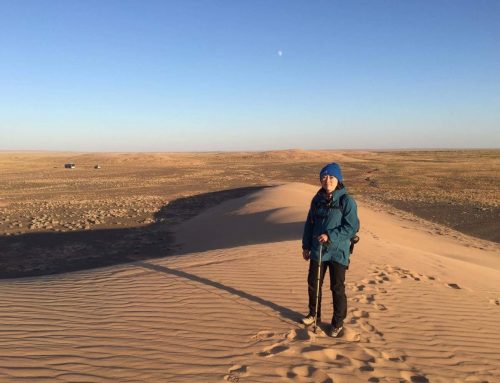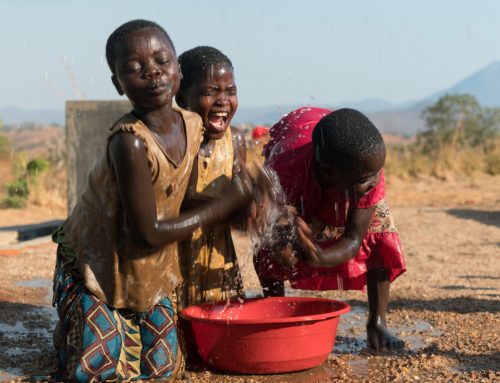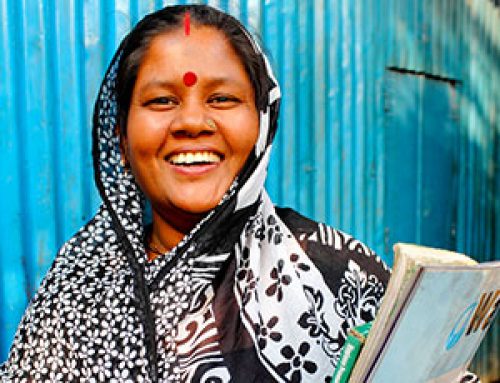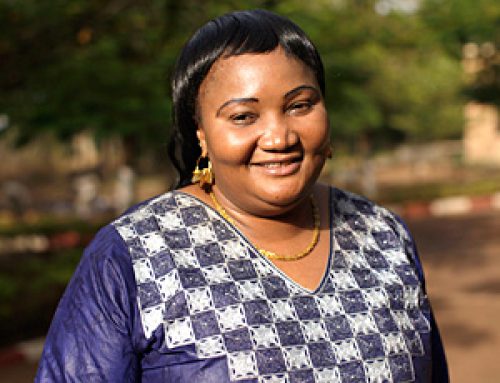Does a small village in India hold the key to revolutionising approaches to the global water crisis?Mahoba District, India
I met Ram Rati in her village on a cool morning at the crack of dawn. I was instantly energised by her quick wit and smirk of brazen defiance. While other women stood demurely off to our side, faces covered and trying not to interfere, Ram Rati walked around like she was mayor, rattling off stories and beaming with pride.
This culturally conservative region in Northern India generally frowns upon women speaking in public, going outside without a veil or sending girls to school. So, to see a woman like Ram Rati, a spitfire barely five feet tall, riding her bike gallantly into their village is a shock to most people. And then she opens her toolbox and fixes their well.
Globally, one in ten people lack access to clean drinking water – a crisis of epic proportions. Installing more wells would seem like an easy answer, but it’s the maintenance of those wells that’s the difficulty. A recent study funded by The Gates Foundation and conducted in 21 African countries found 36% of all handpumps installed within the last twenty years are broken. South Asia has similar statistics.
This ‘well graveyard’ is estimated to be between $1.2-$1.5 billion dollars in lost assets scattered throughout the African continent. Some blame corrupt governments, poor financing models or lack of supply chains for spare parts. Others point fingers at aid organizations: who have good hearts to install wells for needy villages but poor judgment to assume someone else will maintain them. In many cases it’s like buying a car in the UK when you can’t afford the petrol and the nearest mechanic is in France.
Regardless of who is to blame, if one out of three wells are failing – it’s time for a revolution. The international non-profit, WaterAid has an enterprising solution; the non-profit started a business.
Two years ago, WaterAid opened a mechanic training program in the District of Mahoba, where 4,000 wells are broken. They set up a storefront and bought tools, bikes and water quality testing equipment. They trained mechanics, including seven women. And they started repairing wells for any village willing to pay.
It worked. In fact, the phone won’t stop ringing. The mechanics have fixed over 300 wells so far, turning water back on for 30,000 people.
It’s unknown whether this exact model will work outside of India, though similar mechanic programmes in Africa have hailed success. This program works in part because of the government. Most of the repairs are funded by budgets from the local village councils.
As I watched the mechanics fix another well, I realised just how significant this programme is. For the female mechanics, this is their women’s rights movement. “At first I thought, how can she do?” said one of the men standing nearby. “But she got trained and learned, and now she can do it very nicely. Even a man can’t do the job as well as she does.”
Ram Rati’s friend Sheila, who is also a mechanic, added. “When I first learned to cycle people were laughing, saying, ‘Today you are learning to cycle, will you be driving a plane tomorrow?'”
“What do people say now?” I asked.
Ram Rati chuckled, “Now they say, handpump mechanic, please come. We are waiting for repairs, please come!”
Ram’s photos
View photos of Ram in her community.






